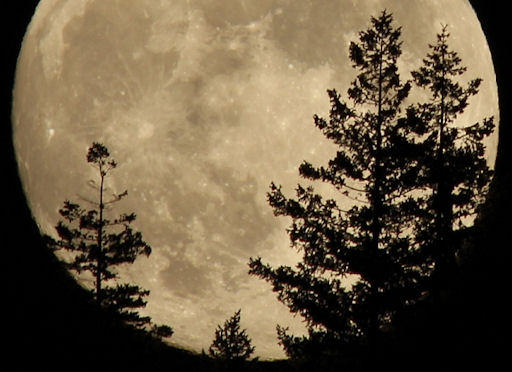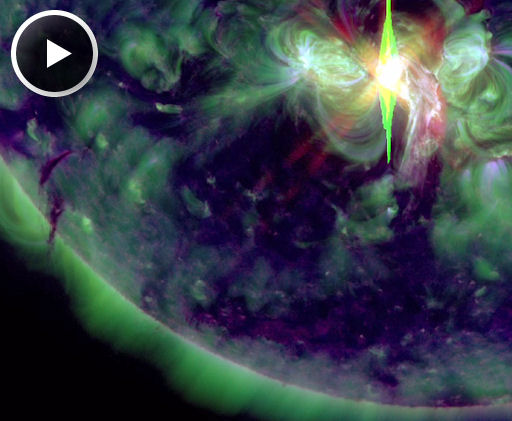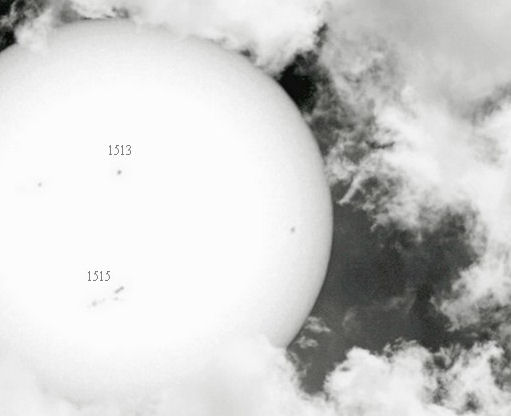Metallic photos of the sun by renowned photographer Greg Piepol bring together the best of art and science. Buy one or a whole set. They make a stellar gift. | | |
A GOOD REASON TO WAKE UP AT DAWN: The brightest planets in the solar system are converging for a beautiful sunrise sky show that begins on the 4th of July. Get the full story and a video from Science@NASA.
CHANCE OF FLARES: Sunspot AR1515 continues to grow and crackle with magnetic eruptions. NOAA forecasters estimate a 70% chance of M-class solar flares and a 10% chance of X-flares during the next 24 hours. X-flare alerts: text, voice.
THUNDER MOON: Picture this: The sound of distant thunder draws you to the window. Lightning zig-zags across the night sky, storm clouds part, and a brilliant beam of moonlight lances through the curtain, spotlighting the observer.
Tonight, this could happen to you. There's a full Moon, the "Thunder Moon," named after the electrical storms of summer. David Hoffmann photographed the waxing Thunder Moon last night in Ashland, Oregon:

The Moon reaches maximum illuminattion on Tuesday, July 3rd, at 18:52 UT. Look for it rising in the east at sunset, and enjoy the thunder moonlight.
Realtime Space Weather Photo Gallery
ALMOST X-FLARE: Big sunspot AR1515 erupted on July 2nd at 10:52 UT, producing an M5.6-class solar flare that almost crossed the threshold into X-territory. NASA's Solar Dynamics Observatory recorded the extreme ultraviolet flash:

A pulse of x-rays and UV radiation from the flare illuminated Earth's upper atmosphere, producing waves of ionization over Europe. Such waves alter the propagation of low-frequency radio transmissions. In Lofoten, Norway, Rob Stammes recorded the ionospheric disturbance using a 60 kHz receiver: data.
The eruption also hurled a CME into space, but not directly toward Earth. The south-traveling cloud could deliver a glancing blow to our planet's magnetosphere on July 4th or 5th. Stay tuned for updates. [SDO movie]
BIG SUNSPOTS: The solar disk is peppered with sunspots so large onlookers are seeing them with the naked eye. Earlier today, the clouds over Paris, France, acted as a natural solar filter to reveal active regions AR1513 and AR1515:

VegaStar Carpentier took the picture using an off-the-shelf Canon EOS 1000D digital camera set at ISO 100 for 1/80 of a second. Photographers, take note of those settings because the sunspots should remain large and obvious for at least a few more days. (Caution: Do not look at the unfiltered sun through camera optics because focused sunlight can damage your eyes. Use the LCD viewscreen for pointing.)
The sunspots are also showing up in sunrises and sunsets around the world. Browse the Realtime SpaceWeather Photo Gallery for more examples.
Realtime Noctilucent Cloud Photo Gallery
[previous years: 2003, 2004, 2005, 2006, 2007, 2008, 2009, 2011]

